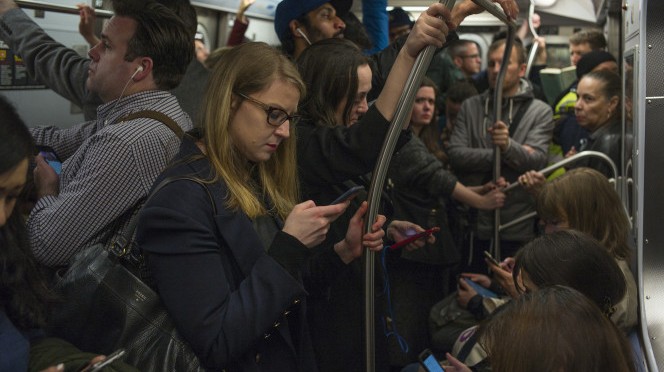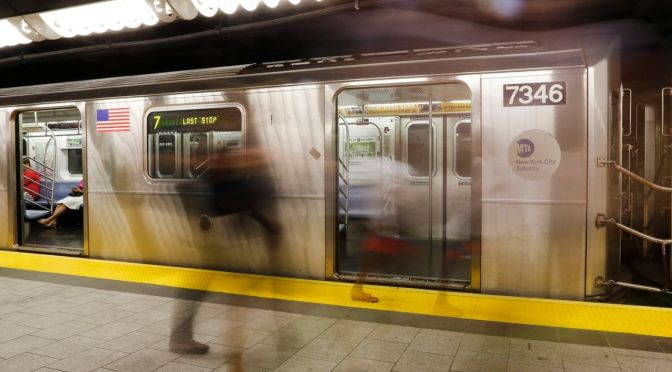NY Post
You’re likely aware subway trains are breaking down partly because parts of the signal system date back to the 1930s. The succession of bad decisions that got you stuck in that tunnel goes back nearly as long — to the 1950s, at least. The list includes politicians and other leaders long dead or, at least, long off the public stage.
In 1952, Robert Wagner Jr., then borough president, protested any attempt to raise the transit fare from 10 cents, despite acknowledging that “the transit operating deficit” — about $500 million in today’s dollars — “is just about as large as the additional money we need this year for pensions for [city] employees.”
Wagner became mayor in 1954. Even as budget gaps grew, Wagner gave most city employees the right to collectively bargain (transit workers were already unionized, as the subways had started out in the private sector). He also massively increased social spending.
Mayor John Lindsay, Wagner’s successor, continued this strategy. That left less money for subways, which the state gradually took over from the city. The MTA spent much of the 1980s and 1990s making repairs and replacements that should’ve been done two decades previously.
In the early 2000s, Gov. George Pataki started piling on debt. He wanted projects like the Second Avenue Subway and East Side Access. The MTA also had to keep repairing and replacing tracks, train cars and the like. Pataki didn’t want to pay for it. In 1999, the MTA owed $12 billion. By 2006, it owed $23.9 billion. Pataki also restructured the MTA’s debt so that the bills would come due later — today.
The MTA’s biggest problem isn’t money. It’s that it can’t do construction fast enough. But debt costs now suck up $2.6 billion in annual spending. At some point soon, the crisis won’t just be on the tracks, but in the CFO’s office.
During the 2008 financial crisis, the MTA said the same thing about its workers as Mayor Michael Bloomberg said about city workers: They couldn’t get raises unless they paid for them through productivity increases or benefits givebacks.
A year later, under Gov. David Paterson’s tenure, a supposedly neutral team of arbitrators gave the workers two years’ worth of 4 percent annual raises and health care goodies, costing the MTA $300 million a year. (The MTA now has $3.2 billion in annual benefits costs.)
In spring 2009, Assembly Speaker Sheldon Silver and Senate Majority Leader Malcolm Smith cobbled together a middle-of-the-night bailout package that awarded the MTA what today amounts to $2 billion in additional annual revenue. Again, lawmakers missed an opportunity to reform labor and construction costs.
Contrary to popular belief, Gov. Andrew Cuomo doesn’t run the MTA. An independent board does. Yes, Cuomo names six of those board members, more than any other politician. Yet they have a legal duty to act independently. Truly independent directors would’ve questioned MTA managers’ labor-cost strategy and operational failures long ago.
They also wouldn’t sign off on major projects such as East Side Access, which will bring Long Island Rail Road trains to a station underneath Grand Central, without questioning whether it’s better to focus on something else first, like subway signals.
The board at least should’ve held off on approving East Side Access until Long Island agreed to pay a greater share, perhaps through higher property tax revenues that’ll come from better transit.
New chairman Joe Lhota, who ran the MTA five years ago, can fix this by encouraging board members to collectively assert a real strategy, rather just signing off on whatever project Cuomo feels like adding, like a $2 billion third track on the LIRR — a fine idea, but one that should wait until New York has made more progress on its aged signal system. Lhota doesn’t need this job; he has a job running a hospital. He should use that independence to push back against the governor when necessary.
MTA chairpeople are supposed to serve six years, to insulate them from day-to-day politics. But Tom Prendergast, who left early this year, was the longest recent-serving chairman and executive director — and he only served four years. Now the MTA only has an interim executive director, Ronnie Hakim, and may soon see another newcomer. (Lhota isn’t taking the day-to-day reins, only chairing the board.)
Hakim and her team should’ve considered long ago what the MTA is now thinking about: closing entire subway lines to speed up signal work. To be fair, the MTA is already planning to close the L train in two years, and the hardest work involves interlockings that control several subway lines; we can’t shut them all down.
Still, whatever the MTA is doing isn’t working. The authority has been reactive, not proactive, in experimenting with new ways to deal with sick passengers and frozen signals and record crowds.
Mayor Bill de Blasio, as he likes to remind us, isn’t in charge of the subways. Still, he hasn’t taken advantage of New York’s record revenue boom — the city will take in $6.6 billion more in local taxes than it did when the mayor took office — to benefit transit.
The state plans to invest nearly $3 billion in signals over the next five years. Why not work with the MTA to see if it can get this work done more quickly? The city could do its part by better managing the streets: carving out more space for bus lanes, bike lanes, real rideshare (with four or more people in a car) and other ways for New Yorkers to get around during shutdowns.
If the MTA can do signal work more efficiently, the mayor could offer some of these record revenues to do more. The city is putting up less than 10 percent of the MTA’s capital budget over five years; it can do more if Cuomo does more. Bloomberg is guilty of the same sin; while he pushed congestion pricing, he never thought strategically about the MTA and how the city could use money as leverage to fix it.
The subway has its heroes, too. Richard Ravitch, who chaired the MTA in the early ’80s, convinced the business community to support the taxes it would need to make up for the neglect of the previous two decades.
Sam Schwartz, the city’s former transportation commissioner, has warned about maintenance cutbacks for years — and has proposed a congestion-pricing plan to fund at least some of this work.
Long before Twitter complaints from stuck passengers, Gene Russianoff, who founded the Straphangers Campaign in 1979, made sure newspapers were armed with data on whether the trains were working well.
And finally, there’s today’s generation of transit reporters and bloggers. Nearly all of them are too young to remember the last transit crisis. Their interest in the trains, and their willingness to think about everything from pension costs to fare structures, can help ensure that this crisis never gets as bad as that one.
Where does that leave Cuomo? It’s too early to tell if he’ll be known as a hero or a villain. He’s increased the MTA’s debt to more than $37 billion, without saying how he’ll pay for it. But his excitement over projects like the Second Avenue Subway isn’t silly. We do need more subway stations.
How he handles the current crisis of delays and crowding without forcing a future generation to pick up the bill will help determine his legacy.
Nicole Gelinas is a contributing editor to the Manhattan Institute’s City Journal.












